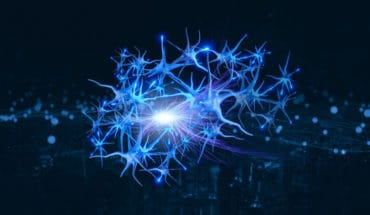Edinburgh University’s Patrick Wild Centre was opened in 2010 by Alfred Wild who had watched his parents care for his autistic brother and determined to help people affected by autism.
Last year the University drew up plans for a combined clinical and basic science facility to investigate and assess autism, Fragile X syndrome, intellectual disabilities and related disorders. This is to study cohorts of individuals with specific, diagnosed disorders in ways that can be conducted in people’s homes with minimum intervention. To further understand how the brain works, their research also uses samples from what is now the Medical Research Council’s Autism Brain Bank. [See my March 2016 blog entitled Brain Banks Pay Dividends for Autism Research.]
The Centre brings researchers together to understand how autism genes affect synapses; how the genetic changes cause illness; and to develop and test novel therapeutic strategies.
Parents of children with autism were mightily encouraged when the Patrick Wild Centre was able to genetically engineer autism in mice. And even more encouraged that this could be reversed. A mouse is not a man but we are getting closer to understanding what autism is as distinct from what it looks like.
My charitable Shirley Foundation had contributed by funding a mock scanner, complemented by work on functional imaging biomarkers and followed by a £1m grant in 2011 for a research operator and an imaging suite with microscopy equipment so massive that it had to be lifted in by crane. There were also expensive ‘consumables’ (in this case rats). The Centre has since leveraged significant additional support from the University, from Autistica and from the Simon Foundation in the United States.
The Centre is collaborating with the Fragile X Society which is holding this year’s Fragile X Research Workshop on 21 May and aims to promote interactions across Europe. Collaborative possibilities are joint projects, data sharing, protocol sharing and harmonisation of measures.
Fragile X syndrome is otherwise known as Martin-Bell syndrome. There is also William’s syndrome, Noonan’s disease and other names given perpetuity for the very worst of historic family reasons.
Fragile X is a condition that happens when the brain is starved of a protein needed for its development. Like autism, it affects more boys than girls – about double the incidence – and seemingly with more serious learning and behaviour problems than girls. The manifestations are very similar to autism: not making eye contact, sensory overloads, hyperactivity … But there are also physical clues: elongated faces, loose joints, flat feet … About 15% of boys are epileptic (girls are 5%) compared with some 40% for autism.
Like autism, there is no cure for Fragile X syndrome. Treatment starts in early childhood, mainly targeted at co-morbidities. Like autism, Fragile X is what the person is. Unlike autism some daughters of affected men are carriers for
Fragile X. Ethicists debate whether they should have pre-natal screening.
Another syndrome similar to late-onset autism is Childhood Disintegrative Disorder. Quality information on CDD is restricted to the basics: to get some preliminary numbers as to incidence and age of onset; and to find out what tests doctors ask for and what treatments they are using.
Autism used to be called a rare disorder (less than 1 in 20,000) but with wider definition and better diagnosis it is today estimated to be 1 in 68.
A disorder may be rare but there are still some 7,000 of them from Aagenaes syndrome to zygomycosis. As Stephen Hawking (arguably the most famous scientist in the world) wrote: “It’s possible for people with rare disorders to lead good and productive lives.”
- Autism: Puberty and sexuality - 4th September 2020
- Update on Autistica - 7th May 2019
- Autistica’s Discover Network - 7th December 2018







To settle the issue and put many parent’s minds to rest across the spectrum, will this study compare Autism rates in fully, partially and nonvaccinated children? Will it also look carefully at the growing research showing Aluminium, contained in vaccines and many other products, although only injected via vaccines, is linked to Autism as well as Alzheimer’s? Can we see such studies carried out in light of the discovery about two years ago, which was said to require a rewriting of the textbooks, the impact of Aluminium on the brain given that it is now known the immune system and… Read more »
I find all studies into Autism interesting, and, if we get a better understanding in this then fantastic. That said, everyone who is diagnosed with autism is unique and their autism is part of them. If someone said there was a vaccine for my child – but that it would change his loving personality – because part of his personality is down to his autism – I’m not sure I would want him to change. Lets get an understanding into autism, yes. But lets not want to change everyone who has autism because that’s who they are and removing that… Read more »